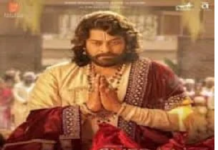
Introduction:
Once ranked as the sixth richest person in the world, Anil Ambani’s journey from a business magnate to a man burdened by ₹1,720 billion in debt is nothing short of a modern-day tragedy.
His dramatic fall, marred by family feuds, political entanglements, and financial Errors, offers a glimpse into the complexities of power, wealth, and relationships.
This article traces the rise of the Ambani empire, the sibling rivalry that tore it apart, and the lessons it holds for us today.
The Birth of an Empire: Dhirubhai Ambani’s Legacy
Dhirubhai Ambani, the founder of Reliance Industries, rose from humble beginnings as a gas station attendant to one of India’s most celebrated businessmen.
By the 1980s, Reliance had become a household name. However, a stroke in 1986 forced Dhirubhai to entrust the business to his sons, Mukesh and Anil Ambani.
-
Mukesh Ambani: Focused on operations, execution, and strategic growth.
-
Anil Ambani: Managed public relations, corporate affairs, and government relations.
Despite their distinct roles, tensions simmered under the surface, fueled by differing visions and personal dynamics.
Table of Contents
ToggleLove, Marriage, and Family Politics
Anil’s personal life became a flashpoint in the Ambani saga. He married Tina Munim, a Bollywood actress, against his father’s wishes.
Dhirubhai reportedly used his political influence to disrupt the relationship, leading to tensions within the family. Meanwhile, Mukesh married Nita Dalal, whose active involvement in the family business further strained relationships.
By the 1990s, the brothers’ differences became more pronounced, exacerbated by family politics and divergent business philosophies.

Sibling Rivalry Turns Bitter
After Dhirubhai died in 2002, the rivalry between Mukesh and Anil erupted into a full-blown feud.
-
The Division of Assets (2005):
The Reliance empire was split, with Mukesh retaining control of core businesses like oil, gas, and petrochemicals, while Anil received telecom, energy, and finance. -
However, Mukesh’s share accounted for 60–70% of the group’s assets, leaving Anil with the remainder.
-
Legal Battles Over Gas:
Anil accused Mukesh of sabotaging his plans to use gas from the Krishna-Godavari Basin for a power plant. -
The dispute led to prolonged court battles, culminating in a Supreme Court ruling that natural gas is a national property.
-
Failed Ventures and Mounting Debt:
Anil’s ventures in telecom and infrastructure faced setbacks, including failed mergers, debt-laden acquisitions, and the transition to 3G and 4G networks.
The Downfall of Anil Ambani
From 2007 to 2018, Anil’s net worth plummeted as his businesses faltered. Key reasons for his downfall include:
-
Over-leveraging: Heavy reliance on loans from Indian and Chinese banks.
-
Market Dynamics: The telecom sector’s evolution, dominated by Mukesh’s Jio, pushed Anil’s Reliance Communications into insolvency.
-
Missed Opportunities: Anil’s inability to adapt to market changes and his ambitious yet poorly executed plans.
A significant blow came in 2019 when Reliance Communications was declared insolvent, with its assets sold to pay off debts.
The collapse marked the end of Anil’s reign as a major player in Indian business.
Lessons from the Ambani Saga
The Ambani brothers’ feud impacted their personal lives and had broader implications for India’s political and financial landscape. Key takeaways from their story include:
-
The Cost of Ego and Pride: The inability to reconcile differences led to mutual losses.
-
Strategic Focus Matters: Mukesh’s emphasis on core businesses helped him thrive, while Anil’s diversification without adequate planning led to setbacks.
-
The Role of Family Unity: Dhirubhai’s vision of a united family empire crumbled due to internal conflicts.
Conclusion: A Cautionary Tale
Anil Ambanis’s dramatic rise and fall is a reminder of the fragile nature of wealth and power. His journey underscores the importance of strategic foresight, humility, and strong family bonds in sustaining success.
Today, Anil has retreated from the business spotlight, reportedly embracing spirituality and considering bankruptcy to settle his debts.
While his story is a cautionary tale, it also highlights the resilience of human ambition and the lessons one can learn from failure.
The Ambani saga is a powerful narrative of how fortunes can change overnight and why family, rather than wealth, should always come first









































